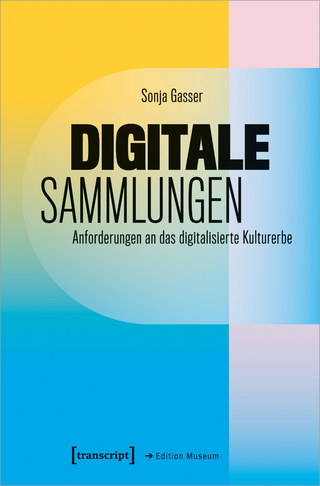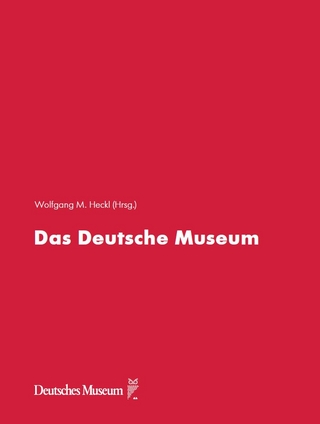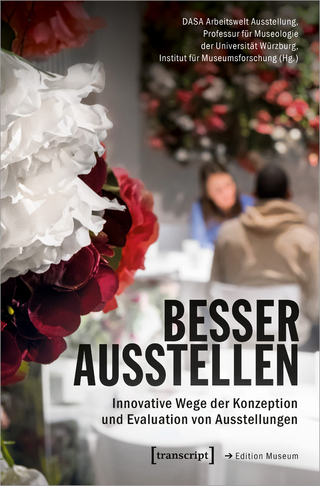
The Museum Accessibility Spectrum
Routledge (Verlag)
978-1-032-46661-3 (ISBN)
- Noch nicht erschienen (ca. Januar 2025)
- Versandkostenfrei innerhalb Deutschlands
- Auch auf Rechnung
- Verfügbarkeit in der Filiale vor Ort prüfen
- Artikel merken
Drawing on contributors from international museum researchers and practitioners, artists and activists, this volume challenges the notion of the core ‘able’ museum visitor, and instead proposes all individuals are positioned on a multidimensional Accessibility Spectrum, which incorporates intersecting physical, sensory, neurodivergent, social and cultural dimensions. It explores the ways in which access provisions designed to enhance the experience of a minority, can enhance the museum experience for all visitors. A constructively critical approach is taken to practice-based chapters, using case studies and approaches from around the globe, split into three main sections. Within the Disability Gains section, authors consider the benefits of inclusive design, perspectives and practice for all visitors to the museum sector. The Social and Cultural Inclusion section examines ways in which museums have broadened representation and participation to better serve audiences who have been excluded, or "underrepresented" by the museums. Finally, the Agents of Social Change section considers how, with this work, museums are challenging systemic biases and exclusions. . The international, cross-disciplinary contributions in this volume are driven by research-informed practice and will transform existing thinking to change future practice within the museum sector by challenging this ableist bias.
The Museum Accessibility Spectrum will be of interest and importance not only to museum practitioners and researchers, but also to readers with an interest in cultural studies, critical disability studies, translation studies, and inclusive and universal design.
Alison F. Eardley is an interdisciplinary researcher, trained in cognitive psychology (and employed in a Social Sciences School at the University of Westminster, London, UK). Building on her previous work on imagery, imagination and spatial processing in congenitally totally blind people and the sighted, Alison’s work is now focused on access, inclusion, interpretation and evaluation within the museum sector. Vanessa E. Jones has a background in art history and museum education and has extensive expertise in access and inclusion. As the Smithsonian National Portrait Gallery’s Access Programs Manager since 2015, she has advocated for accessibility and led the development of programs and initiatives to enhance the experience of all visitors, including those with disabilities.
List of figures; List of contributors; Section 1 – Introduction: Chapter 1: The Museum Accessibility Spectrum: recognising the multidimensional access needs of all museum audiences; Chapter 2: Unpicking ableism and disablism in museums: Why access should be for all; Section 2 – Disability Gain: Chapter 3: Feeling Our Way: Anti-Ableist Provocations for the Future of Inclusive Design in Museums; Chapter 4: Developing the Calm Room: A Journey of Creating an Accessible Space for Inclusion and Well-being; Chapter 5: French Nineteenth-Century Art Writing as Audio Description: the case of Edouard Manet; Chapter 6: Seeing the Deaf Visitor: Improving Accessibility Through a Critical Studies Lens; Chapter 7: Blundering into Sensorial Conversation; Section 3: Social and Cultural Inclusion: Chapter 8: Social and cultural barriers to inclusion: class and race at the Bethnal Green Museum of Childhood; Chapter 9: Going Through the Portal: Permeable Walls and Immersive Community Engagements rooted in Disability Justice; Chapter 10: What is a museum? Reframing the power dynamic between museums and audiences ; Chapter 11: Stepping Aside: A reflection on how Museums can transfer power to communities, open up collections, and increase access through the creation of memory boxes; Chapter 12: The Sacred Cave of Kamukuwaká: Enabling Digital Futures for Indigenous Cultural Heritage in the Amazonian Xingu; Section 4: Agents of Social Change: Chapter 13: No laughing matter? Reimagining the statuette of a ‘comic’ actor with dwarfism at the British Museum; Chapter 14: Curating for Change: How can D/deaf, disabled and neurodivergent curators drive change in museums in terms of cultural representation and inclusive interpretation?; Chapter 15: Inclusive Design and Accessibility: A Methodology of Perpetual Evolution and Innovation; Chapter 16: Cultural Inclusion in Times of Crisis: Old and New Traumas; Chapter 17: Museums for Equality: Combating Prejudice, Promoting Human Rights and Practices of Social Inclusion in Egypt’s Museums; Chapter 18: Social inclusion, cultural participation and public ruptures at Iziko South African National Gallery: A look at Our Lady and Art of Disruption exhibitions. Section 5: Museum Futures: Instigators of change: Museums as inclusive, accessible, equitable, participatory hubs; Acknowledgements; Index.
| Erscheint lt. Verlag | 10.1.2025 |
|---|---|
| Reihe/Serie | Museum Meanings |
| Zusatzinfo | 25 Halftones, black and white; 25 Illustrations, black and white |
| Verlagsort | London |
| Sprache | englisch |
| Maße | 156 x 234 mm |
| Themenwelt | Kunst / Musik / Theater |
| Geisteswissenschaften ► Geschichte ► Hilfswissenschaften | |
| Sozialwissenschaften ► Soziologie | |
| ISBN-10 | 1-032-46661-8 / 1032466618 |
| ISBN-13 | 978-1-032-46661-3 / 9781032466613 |
| Zustand | Neuware |
| Haben Sie eine Frage zum Produkt? |
aus dem Bereich


